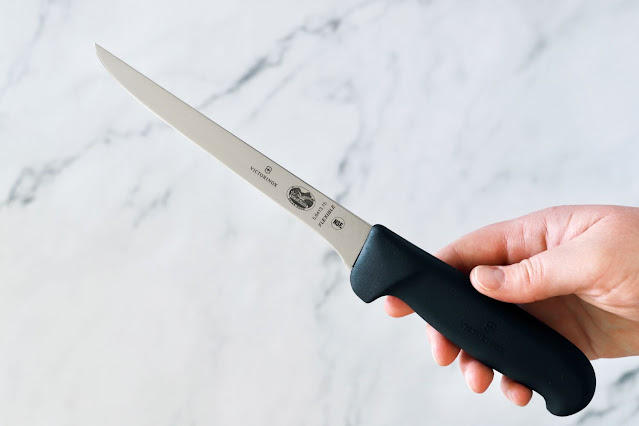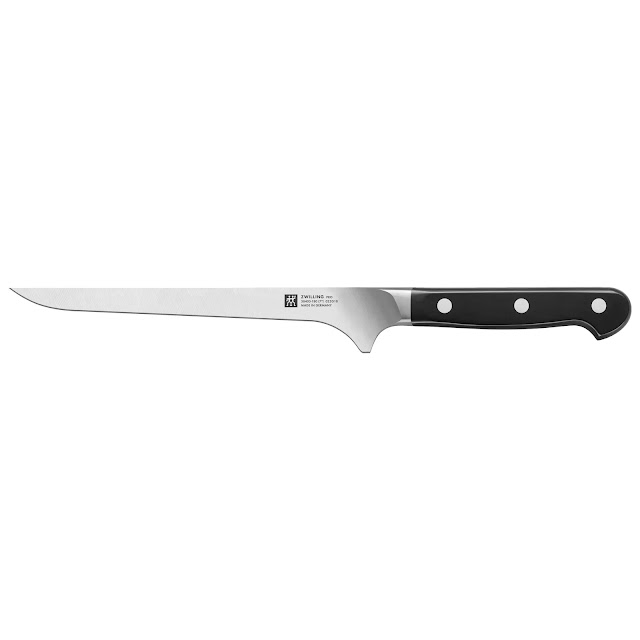Mastering the Craft: Unraveling the Secrets of the Boning Knife
In the world of culinary expertise, the boning knife holds a prominent role. This specialized tool is designed specifically for deboning meat, offering precision, control, and ease when working around bones and joints. In this blog post, we will dive into the realm of boning knives, exploring their significance, discussing essential features to consider, and providing insights on choosing the perfect boning knife to enhance your meat preparation skills.
The Significance of the Boning Knife:
A boning knife is an indispensable tool for cooks and chefs involved in meat preparation. Its thin and flexible blade allows for intricate maneuvering, ensuring clean and precise cuts while removing bones, trimming fat, or filleting fish. The boning knife is a valuable asset that elevates your culinary skills and delivers professional-quality results.
Key Features to Consider:
When selecting a boning knife, pay attention to the following features:
a. Blade Type: Boning knives come in different blade types, such as stiff, semi-flexible, and flexible. Stiff blades are suitable for larger cuts and tougher tasks, while flexible blades excel at delicate filleting and intricate deboning. Choose the blade type that suits your specific needs.
b. Blade Length: The blade length should align with the size of the meat you typically work with. Opt for a shorter blade for precise work or smaller cuts, and choose a longer blade for larger cuts and more substantial tasks.
c. Blade Material: Look for boning knives made from high-quality stainless steel or carbon steel. Stainless steel blades offer durability, rust resistance, and easy maintenance, while carbon steel blades provide exceptional sharpness and edge retention.
d. Handle Comfort: Consider a boning knife with an ergonomic handle design that provides a comfortable and secure grip. Handles made from materials like wood, plastic, or composites offer excellent durability and control.
Different Types of Boning Knives:
Boning knives can vary in design based on their intended use. Here are some common types:
a. Stiff Boning Knife: Featuring a rigid blade, stiff boning knives are ideal for larger cuts of meat and tasks that require more leverage and control.
b. Flexible Boning Knife: With a pliable blade, flexible boning knives are perfect for intricate filleting, deboning delicate fish, or tasks that demand precision and maneuverability.
c. Curved Boning Knife: Specifically designed for trimming fat and removing bones from curved surfaces like joints or poultry, curved boning knives provide enhanced efficiency.
Care and Maintenance:
To ensure the longevity and optimal performance of your boning knife, follow these care and maintenance tips:
a. Hand wash the knife with warm soapy water immediately after use and dry it thoroughly.
b. Avoid using harsh detergents or abrasive materials that may damage the blade.
c. Regularly sharpen your boning knife using a honing steel or sharpening stone to maintain its sharpness.
d. Store the knife in a knife block, on a magnetic strip, or in a sheath to protect the blade and prevent accidents.
Conclusion:
The boning knife is an essential tool for anyone engaged in meat preparation. With its precision, flexibility, and ability to navigate around bones, it becomes an invaluable companion in the kitchen. By considering key features and selecting the right type of boning knife for your specific needs, you can enhance your meat preparation skills, achieving clean, precise cuts and professional-level results. Embrace the craftsmanship of the boning knife, and embark on a journey of culinary excellence with confidence and finesse.

.jpg)


Comments
Post a Comment